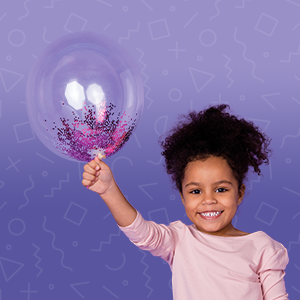What Is Iron?
Iron is a mineral found in plants and animals and all living things. It's an important component of hemoglobin, the part of red blood cells that carries oxygen from the lungs to the body. Iron gives hemoglobin the strength to "carry" (bind to) oxygen in the blood, so oxygen gets to where it needs to go.
Without enough iron, the body can't make hemoglobin and makes fewer red blood cells. This means tissues and organs won't get the oxygen they need.
People can get iron by eating foods like meat and dark green leafy vegetables. Iron is also added to some foods, such as infant formula and cereals.
How Much Iron Do Kids Need?
Depending on their age, kids need different amounts of iron:
- Infants who breastfeed tend to get enough iron from their mothers until 4–6 months of age. Around this time, iron-rich foods like fortified cereal and puréed meats are usually introduced. Breastfed babies who don't get enough iron should be given iron drops prescribed by their doctor. Babies given iron-fortified formula do not need added iron.
- Infants ages 7–12 months need 11 milligrams of iron a day.
- Toddlers ages 1–3 years need 7 milligrams of iron each day. Kids ages 4–8 years need 10 milligrams while older kids ages 9–13 years need 8 milligrams.
- Teen boys should get 11 milligrams of iron a day and teen girls should get 15 milligrams. (Adolescence is a time of rapid growth and teen girls need additional iron to replace what they lose monthly when they begin menstruating.)
- Young athletes who regularly engage in intense exercise tend to lose more iron and may need extra iron in their diets. People following a vegetarian diet might also need added iron.
What's Iron Deficiency?
Iron deficiency is when a person's body doesn't have enough iron. It can be a problem for some kids, particularly toddlers and teens (especially girls who have very heavy periods). In fact, many teenage girls are at risk for iron deficiency — even if they have normal periods — if their diets don't contain enough iron to offset the loss of blood during menstruation.
After 12 months of age, toddlers are at risk for iron deficiency when they no longer drink iron-fortified formula — and, they may not be eating enough iron-containing foods to make up the difference.
Iron deficiency can affect growth and may lead to learning and behavioral problems. If iron deficiency isn't corrected, it can lead to iron-deficiency anemia (a decrease in the number of red blood cells in the body).
How Can I Help My Child Get Enough Iron?
Kids and teens should know that iron is an important part of a healthy diet. Foods rich in iron include:
- beef, pork, poultry, and seafood
- tofu
- dried beans and peas
- dried fruits
- leafy dark green vegetables
- iron-fortified breakfast cereals and breads
(Note: Iron from animal sources is more easily absorbed by the body than iron from plant sources.)
To help make sure kids get enough iron:
- Limit the amount of milk toddlers drink to about 16–24 fluid ounces (473–710 milliliters) a day.
- Serve iron-fortified infant cereal until kids are 18–24 months old.
- Serve iron-rich foods alongside foods containing vitamin C (such as tomatoes, broccoli, oranges, and strawberries). Vitamin C improves the way the body absorbs iron.
- Avoid serving coffee or tea at mealtime — both contain tannins that reduce the way the body absorbs iron.
